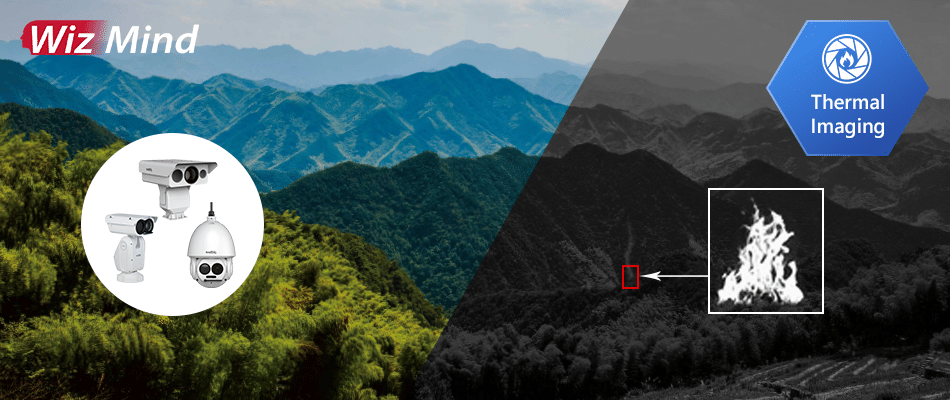Three thermal imaging functions that you need to know


James Thorpe
Share this content
Starting from cooled infrared detectors developed in the 1950’s, thermal imaging technology has evolved into the multi-purpose tool that we all know today. It is being used in a myriad of industries including medical, industrial, commercial and even in satellites. When uncooled infrared detectors were invented, thermal imaging further reached the general market by providing relatively cheaper and easier to maintain thermal imaging products, which were later introduced to the security surveillance industry.
A simple definition of thermal imaging would be “a process of converting infrared radiation into visible images through a thermal camera.” Since infrared radiation is emitted by all objects with a temperature above absolute zero (based on black body radiation law), thermal imaging makes it possible to see one’s environment and variations in temperature with or without illumination.
With its accumulated experience in camera image analysis and deep-learning algorithms, Dahua Technology has developed a wide range of thermal imaging devices (e.g. TPC 8 Series ) that can effectively monitor an area under all lighting conditions. To give you ample idea about it, here are three monitoring functions of thermal imaging that you need to know:
Long range surveillance
Powered by deep learning algorithms, Dahua WizMind thermal cameras can accurately detect vehicle (up to 20km) and human (up to 8km) targets with clear and fine details without being affected by environmental factors such as fog, haze, snow, etc. Long range surveillance thermal cameras like the TPC-PT8621C with 60x optical zoom is ideal for large-scale monitoring operation that requires 24/7 surveillance.
In addition, this camera is also equipped with alarm linkage function. When an intrusion has been detected, the alarm will be triggered and corresponding notifications will be sent to the command centre, allowing the security team to either warn the intruders via siren and audio deterrence, or dispatch security personnel to handle the situation in time.
Boat detection
Poor visibility at night on bodies of water like seas and rivers is not uncommon, making it difficult for maritime authorities to get clear images of the vessels on the surface.
Designed for 24/7 monitoring, Dahua WizMind thermal cameras like the TPC-PT8621A model can detect ships (about 10m x 5m in size) from a distance of up to 3km and present multiple data including speed, length, distance and height. It also features area intrusion function, allowing it to automatically determine if a boat has illegally entered a restricted area.
Moreover, other Dahua WizMind thermal cameras can even detect boats on the surface as far as 10km away, offering a long-range boat detection, identification and tracking even under poor light condition.
Fire detection
Thermal imaging can detect differences in temperature change, allowing it to detect objects with higher temperature compared to the average temperature in the scene. With this capability, thermal imaging cameras can detect presence of fire as it is commonly associated with much higher temperature than its surroundings.
The Dahua WizMind thermal cameras offer early fire detection from up to 10km. The TPC-SD8421, for instance, is equipped with 400 (H) x 300 (V) VOx thermal sensor technology with 45x optical zoom. It supports fire detection and linkage alarm functions, providing rapid response in milliseconds and sending alarm push notifications to the command centre to let security personnel take necessary actions in time.
Key takeaways
The thermal imaging technology has expanded its usage and applications over the years. Thanks to continuous innovation in modern technology, devices like the thermal cameras of Dahua WizMind were developed to address the different monitoring requirements of various application scenarios. Long range surveillance, boat detection and fire detection are just some of its valuable applications in the industry. As technology progresses and demand increases, more and more potential monitoring applications of thermal imaging lies ahead.



